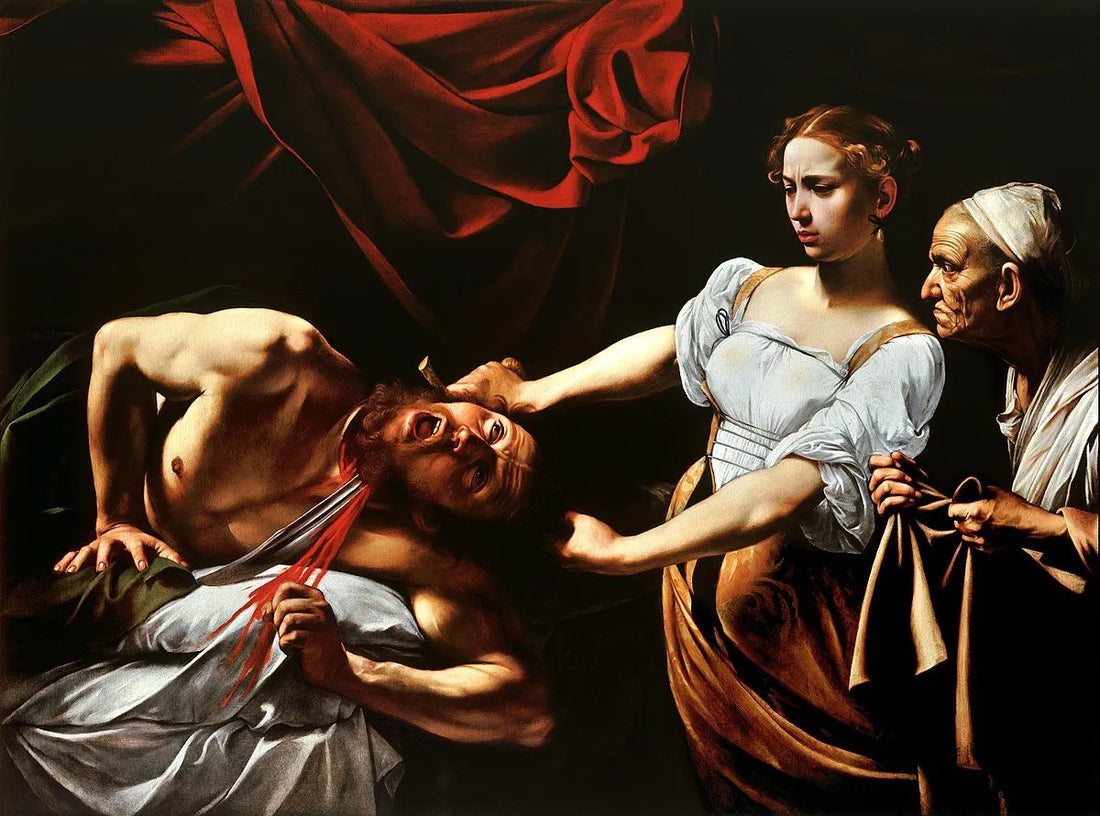“Angry women care. Angry women speak and yell and sob their truths.” —Roxanne Gay
The phenomenon of female rage has long been highlighted in contemporary film. Horror and thriller films like Pearl, Jennifer’s Body, and Promising Young Woman center themselves on female rage and revenge. But feminine rage is not new. The anger of women has been stifled and suppressed throughout history, with their anger on display becoming a catalyst for their own discredit as hysterical shrews. As a historically disenfranchised identity, women have faced obstacles and oppression on screen and off. The expression of rage, violence, and revenge in women has often been associated with and pathologized as madness and hysteria. Whereas male anger is seen as powerful and warranted, a woman’s anger is unruly and inappropriate. In art history, the display of feminine rage provides a cathartic and powerful demonstration of the strength and complexity of women. To celebrate Women’s History Month, we are highlighting the presentation of female rage throughout art history, exploring outspoken and angry women then and now.
Baroque painter Artemisia Gentileschi is known for her depictions of female figures with naturalism and emotion. Gentileschi’s Judith Slaying Holofernes is an iconic depiction of female brutality, transgressing normative expectations for female emotion. Inspired by Caravaggio, the painting depicts the biblical story of Judith, a young widow, slaying Holofernes, an Assyrian general that had sacked her village. Adorned in her finest garments, Judith recites a long prayer and seduces Holofernes in order to murder him and save her people. This contradicts Carvaggio’s painting of the story depicting a helpless and shocked female attendant who observes Judith’s anger; Gentileschi portrays two enraged women working together, their sleeves rolled up and their expressions determined. Caravaggio’s Judith appears more graceful and upright, while Gentileschi’s Judith is forceful and deliberate.


Some scholars have suggested that Artemisia Gentileschi’s portrayal of Judith’s rage reflects her own anger at the time that she created the piece. Gentileschi was sexually assaulted at the age of 17 by a friend of her father and had to face her attacker in court after he refused to marry her. During the trial, Gentileschi attempted to seek revenge by attacking her rapist with a knife. Furthermore, the artist’s possible self-identification with Judith can be seen in the details of the bracelet on the heroine’s wrist, which appears to depict the goddess Artemis.
Several years later, another artist tackled female rage. Elisabetta Sirani created Timoclea Killing Her Rapist in 1659. Sirani was an advocate for women painters, opening up her own school to train other women in her art. In her own work, she frequently chose to portray strong female figures. Timoclea Killing Her Rapist depicts a story from Alexander the Great’s invasion of Thebes. During the invasion, a captain of Alexander’s army raped Timoclea, a young noblewoman. After sexually assaulting her, the captain demands to know where her money is hidden. Timoclea bravely leads him to her garden wall, where she pushes him into the well and throws rocks at his body, killing him. In the Italian Baroque style, Sirani shows Timoclea’s dramatic act of bravery with a sense of justice. Her rapist is shown in a helpless and vulnerable position as she tosses his body down the well with anger and determination.


In the 1950s, abstract artist Willem de Kooning created his Woman series, portraying the female figure in a different manner than decades past. For centuries, the female figure was depicted in sexualized and romanticized poses. The artist once summarized female representation in art as “the idol, the Venus, the nude.” In a transgressive rejection of this style, Kooning portrayed the female figures of Woman in more expressive and grotesque expressions. The brush strokes are heavy and forceful, and the expressions are disturbed and angry. The figure of Woman I, for example, is not idealized and beautiful, but rather, off putting and emotional, embodying the artist’s claim of “Beauty becomes petulant to me. I like the grotesque. It’s more joyous.”
Finally, in 1997, experimentalist video artist Pipilotti Rist created Ever is Over All. The video shows two reels, one of a field of large tropical flowers, and the other of a woman strolling down a street in red heels. The woman forcefully and cheerfully smashes the windows of each parked car on the street with a large flower, smiling as she does so. A female police officer smiles and salutes the woman, as if a nod of validation. The iconic video was used as inspiration for the “Hold Up” music video from Beyoncé’s 2016 album Lemonade. Rist’s video is a testament to the power of female rage in art as a liberation from the social norms of well-behaved women.
©ArtRKL™️ LLC 2021-2023. All rights reserved. This material may not be published, broadcast, rewritten or redistributed. ArtRKL™️ and its underscore design indicate trademarks of ArtRKL™️ LLC and its subsidiaries.





